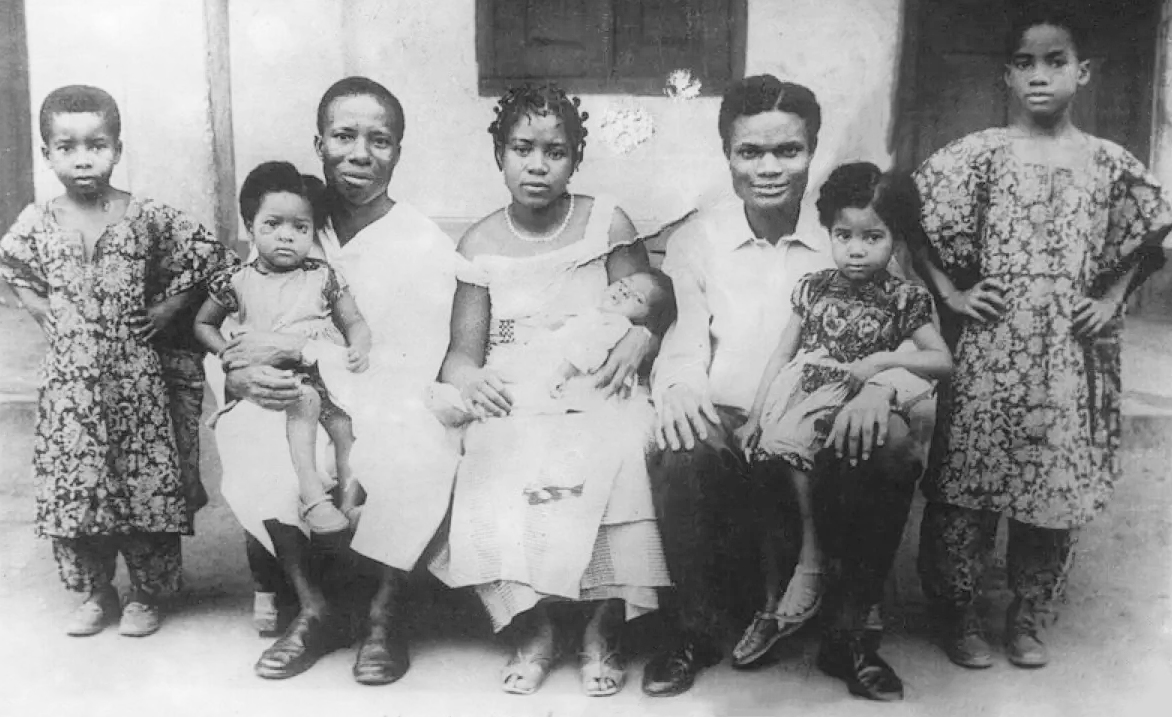Philip Emeagwali (born August 23, 1954) is a Nigerian American computer scientist. He achieved computing breakthroughs that helped lead to the development of the internet. His work with simultaneous calculations on connected microprocessors earned him a Gordon Bell Prize, considered the Nobel Prize of computing.
Born in Akure, a village in Nigeria, Philip Emeagwali was the oldest in a family of nine children. His family and neighbors considered him a prodigy because of his skills as a math student. His father spent a significant amount of time nurturing his son’s education. By the time Emeagwali reached high school, his facility with numbers had earned him the nickname “Calculus.”
Fifteen months after Emeagwali’s high school education began, the Nigerian Civil War erupted, and his family, part of the Nigerian Igbo tribe, fled to the eastern part of the country. He found himself drafted into the army of the seceding state of Biafra. Emeagwali’s family lived in a refugee camp until the war ended in 1970. More than half a million Biafrans died of starvation during the Nigerian Civil War.

After the war ended, Emeagwali doggedly continued to pursue his education. He attended school in Onitsha, Nigeria, and walked two hours to and from school each day. Unfortunately, he had to drop out due to financial problems. After continuing to study, he passed a high school equivalency exam administered by the University of London in 1973. The education efforts paid off when Emeagwali earned a scholarship to attend college in the U.S.
Emeagwali traveled to the U.S. in 1974 to attend Oregon State University. Upon arrival, in the course of one week, he used a telephone, visited a library, and saw a computer for the first time. He earned his degree in mathematics in 1977. Later, he attended George Washington University to earn a Master of Ocean and Marine Engineering. He also holds a second master’s degree from the University of Maryland in applied mathematics.
While attending the University of Michigan on a doctoral fellowship in the 1980s, Emeagwali began work on a project to use computers to help identify untapped underground oil reservoirs. He grew up in Nigeria, an oil-rich country, and he understood computers and how to drill for oil. Conflict over control of oil production was one of the critical causes of the Nigerian Civil War.
Initially, Emeagwali worked on the oil discovery problem using a supercomputer. However, he decided it was more efficient to use thousands of widely distributed microprocessors to do his calculations instead of tying up eight expensive supercomputers. He discovered an unused computer at the Los Alamos National Laboratory formerly used to simulate nuclear explosions. It was dubbed the Connection Machine.
Emeagwali began hooking up over 60,000 microprocessors. Ultimately, the Connection Machine, programmed remotely from Emeagwali’s apartment in Ann Arbor, Michigan, ran more than 3.1 billion calculations per second and correctly identified the amount of oil in a simulated reservoir. The computing speed was faster than that achieved by a Cray supercomputer.
Describing his inspiration for the breakthrough, Emeagwali said that he remembered observing bees in nature. He saw that their way of working together and communicating with each other was inherently more efficient than trying to accomplish tasks separately. He wanted to make computers emulate the construction and operation of a beehive’s honeycomb.
Emeagwali’s primary achievement wasn’t about oil. He demonstrated a practical and inexpensive way to allow computers to speak with each other and collaborate all around the world. The key to his achievement was programming each microprocessor to talk with six neighboring microprocessors simultaneously. The discovery helped lead to the development of the internet.
Emeagwali’s work earned him the Institute of Electronics and Electrical Engineers’ Gordon Bell Prize in 1989, considered the “Nobel Prize” of computing. He continues to work on computing problems, including models to describe and predict the weather, and he has earned more than 100 honors for his breakthrough achievements. Emeagwali is one of the most prominent inventors of the 20th century.

